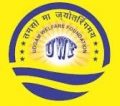IELTS Reading Test 3 Academic Free – Complete Practice Guide
The IELTS Reading Test 3 Academic Free provides a realistic reading experience for test takers aiming for higher band scores. This test includes authentic academic passages with 40 practice questions designed to evaluate comprehension, analytical skills, and vocabulary recognition. Practicing regularly with this format builds confidence and enhances reading speed.
Benefits of IELTS Reading Comprehension Practice
Engaging in consistent IELTS Reading Comprehension Practice improves your ability to locate key information quickly. It also trains your mind to identify synonyms and paraphrased sentences, which are essential in the IELTS Reading module. Additionally, this free practice test helps you adapt to real exam timing and pressure effectively.
Tips to Improve Reading Accuracy and Timing
Start by scanning passages for keywords, then skim for main ideas before reading in detail. Furthermore, review your incorrect answers carefully to identify patterns in your mistakes. Consequently, by using well-structured online materials, you can master comprehension skills and perform efficiently in the IELTS Academic Reading section.
IELTS Academic Reading Practice Test (Passage 3)
Topic: The Role of Nanotechnology in Medical Innovations (Questions 25-40)
Passage Text: The Role of Nanotechnology in Medical Innovations
Paragraph A: Nanotechnology, the manipulation of matter on an atomic and molecular scale, is poised to instigate a **paradigm shift** in medical science. By operating at the same scale as **biological molecules**, nanotechnology offers unprecedented precision in diagnosing, treating, and preventing disease. Proponents, or ‘techno-optimists’, envision a future where nanorobots patrol our bloodstream, identifying and neutralising pathogens or cancerous cells long before symptoms manifest. Targeted **drug delivery systems**, using nanoparticles as vessels, promise to ferry chemotherapeutic agents directly to tumours, thereby mitigating the debilitating systemic side effects of conventional chemotherapy. This level of specificity is the holy grail of modern medicine.
Paragraph B: However, a chorus of cautionary voices urges a more measured perspective. Critics argue that the relentless enthusiasm for nanomedicine often overlooks profound **ethical and safety considerations**. The very properties that make nanoparticles medically useful—their high reactivity and ability to cross biological **barriers**—are also potential sources of **toxicity**. The long-term impact of these engineered particles on the human body and the broader environment remains largely unknown, a vast landscape of unintended consequences. The ethical dimension is equally complex. The prospect of ‘human enhancement’ through nanotechnology—for instance, augmenting cognitive or physical abilities—threatens to create a new socio-economic **divide**: the nano-enhanced and the nano-deprived.
Paragraph C: This dichotomy between optimism and caution defines the current narrative of nanomedicine. The optimists point to tangible **breakthroughs**, such as nano-coated implants that reduce rejection rates or quantum dots that illuminate microscopic tumours during surgery. The sceptics, meanwhile, call for robust regulatory frameworks and a broader public discourse on the direction of this powerful technology. They contend that the trajectory of innovation must be guided not merely by technical feasibility but by a conscientious assessment of societal impact. The ultimate challenge, therefore, may not be scientific or technical, but **philosophical**: determining what kind of future we wish to build with this atomically precise control over the fabric of life itself.
Quiz Results
Review your answers and the correct solutions below.

